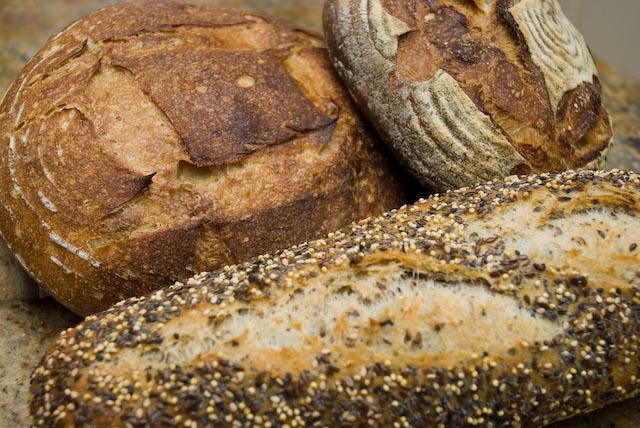Christmas Baking and Experiments...
Well, I finally got to use my new Lodge Combi Cooker... and compared it head to head with my cloches (and tested my steaming too!). I made three breads - Tartine (my way - with more levain since mine is so mild), my normal sourdough boule, and my take on Eric Kayser's Pain aux Cereales. The three breads are shown in the photograph below in the clockwise order listed from the upper left.
